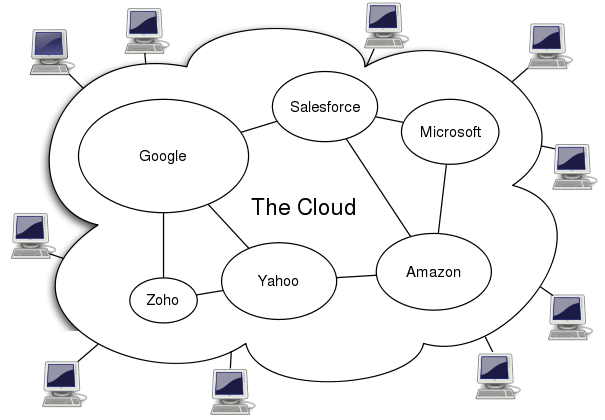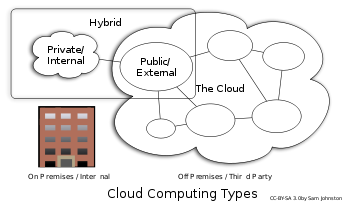
Cloud computing is getting a lot of play in the k-12 community and there’s no doubt that there are some wonderful benefits to this model for schools.
Web-based software can be the road to 24×7 access from any location with Internet access.
Software as a service off-loads the costs of servers and the ongoing cost of maintaining them by an already overburdened tech support staff.
Web-based software gets updated centrally and insures that all students and teachers are using the same version.
However, there are some limitations to the public cloud:
Not all applications run in the public cloud.
Storage of sensitive student data is not under the complete control of the school district.
Software becomes an annual subscription and not an outright, one-time purchase. Over time, software budgets will grow as we add more subscriptions.
We still need the local network for policies, printing, grouping students, web filtering, and local storage
We can address these issues by developing ‘private clouds’ within the district.

We can virtualize desktops and applications and run them from servers in the ‘private cloud’ so that little or no software remains on the students’ or teachers’ computing device. Combining Public and Private clouds provides the best of all world’s:
All the benefits of the public cloud as stated above…
plus
The school can run applications that are unique to their environment.
Access these applications 24×7 from any device with Internet access.
Become device independent (apps are running on servers) thus allowing the purchase of thin clients, netbooks, and other low cost computing devices.
Install and manage applications centrally.
Slow the replacement cycle (software runs on servers so no need to buy new computers every few years.
There is no doubt that we are at a unique crossroads in educational technology. There are huge changes in the ed tech paradigm that are about to take place. The Public and Private clouds are a means to an end and not the end itself.
As we shift to this new paradigm we also make it possible for each student to have their own device and to access their learning resources and files from anywhere, at any time.
pete
Is this an example of what you are talking about? Nice vision how may schools are moving this way? 30% 50% >
http://www.stone-ware.com/cloud/products/security.html
Great blog entry Pete. Google apps does it all for free. Check it out @ http://www.google.com/a/edu
Genaldiy,
As much as I like Google apps, it does not do it all for free. There are many, many applications that schools use that are not provided by Google apps. Take another look at the distinction between a public cloud and a private cloud.
pete
Hi, This is ramki from Hyderabad, India. I found the note amazingly well written for Students and Teachers alike, explaining the concept and take-home benefits effectively.
India is going thro’ a revolution in public policy relating to use of IT in K-12 and Higher education. All Government schools (we call them ‘public scools’ here ) are going to be supported to set up ICT labs and it is expected to trigger even better response from ‘private’ schools as well.
There is a lot of debate here about many of the issues of maintenance, cost-effective solutions etc. This note seems to address many of them effectively and the hybrid cloud can be an effective answer. Congratulations !
ramki
Ramki,
Today, if I were designing and building an ed tech infrastructure from scratch, I would definitely stay away from the distributed computing model that has dominated the networking paradigm here in the US for decades. (Distributed computing defined as loading all the educational apps on the computer’s hard drives)
This model served us well; but has now outgrown its usefulness. Managing thousands of hard drives is a very expensive way to maintain an ed tech infrastructure. It also makes 24×7 access VERY difficult, and forces us to buy higher end computers to insure that we postpone obsolescence for a longer period.
Using the newer hybrid cloud model allows us to manage dozens of application servers rather than thousands of hard drives. It makes 24×7 access easy; AND it allows us to buy low end, inexpensive devices and keep them longer because the processing is done on servers in the public or private cloud.
Good luck!
pete
I’m a freelance journalist on assignment with Scholastic Administrator magazine, writing an article about how K-12 schools can prepare for cloud computing. I am requesting a 20 minute phone interview with Pete Reilly before Sept. 30 to address whether districts should have a private or public cloud solution.
Please let me know of Mr. Reilly’s interest and availability.
Much thanks, Carol Patton
carol@carolpattonwriter.com